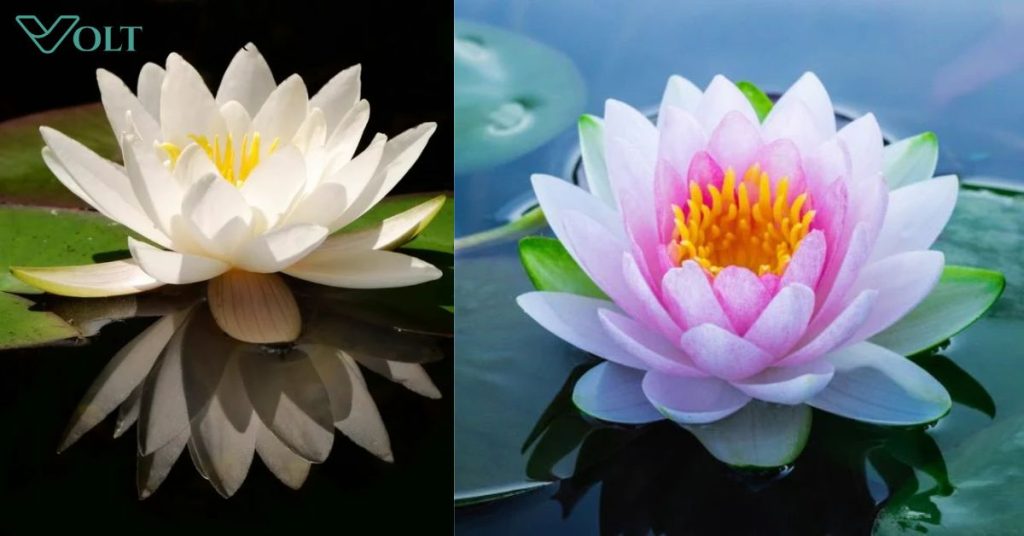Introduction: The Allure of the Lotus Flower
Few natural symbols captivate the human spirit quite like the lotus flower. With its elegant petals rising above murky waters, this extraordinary bloom has become a universal metaphor for resilience, beauty, and spiritual purity. Across civilizations—from the ancient Nile to modern yoga studios—the lotus flower has been revered not just for its aesthetic appeal, but for its deep philosophical and religious significance.
In today’s fast-paced world, the lotus flower remains more than a pretty plant. It has grown into a powerful cultural icon, a spiritual emblem, and even a source of healing in holistic medicine. Whether it’s the centerpiece of a serene pond or an inked symbol on someone’s skin, the lotus flower speaks to our shared desire for growth, renewal, and clarity in the face of life’s challenges.
Cultural Significance of the Lotus Flower Across the World
The lotus flower holds a deeply rooted cultural legacy that spans continents and centuries. From ancient temples in Asia to hieroglyphs in Egyptian tombs, the lotus has served as a universal symbol of rebirth, purity, and transformation. What makes the lotus especially remarkable is how diverse cultures, often with no direct connection to one another, have adopted similar meanings for the flower.
In Ancient Egypt: The Symbol of the Sun and Rebirth
In ancient Egyptian mythology, the blue lotus flower (Nymphaea caerulea) was considered sacred. It was closely tied to the sun god Ra and symbolized the cyclical nature of life—birth, death, and rebirth. Egyptians observed that the lotus closed at night and reopened with the sunrise, interpreting this as a symbol of resurrection and renewal. The flower was often depicted in tombs, artwork, and even as part of burial ceremonies to represent eternal life.
Moreover, the lotus was associated with the creation myth where the flower emerged from the primordial waters of Nun and gave birth to the sun. Its presence in the Book of the Dead and other sacred texts underscores its role as a bridge between the physical and spiritual worlds.
In Asia: From Imperial Emblem to Philosophical Ideal
Across Asia, the lotus flower is inseparable from the region’s spiritual and cultural identity. In India, the flower is the national symbol and appears in ancient scriptures, temples, and dance. Known in Sanskrit as Padma, the lotus represents divine beauty and purity. In many Hindu traditions, deities like Lakshmi (goddess of prosperity) and Brahma (creator god) are depicted seated on lotus thrones, highlighting the flower’s association with creation, fertility, and enlightenment.
In China, the lotus has been admired for centuries in Confucianism and Taoism. It represents harmony, integrity, and detachment from worldly concerns, because the flower thrives in muddy water without becoming soiled. During the Tang and Song Dynasties, the lotus also became a frequent subject in poetry and painting—often symbolizing a gentleman’s moral purity.
Global Adoption: From Sacred to Secular
In the modern era, the lotus flower has transcended its original cultural contexts to become a global symbol of mindfulness, self-care, and personal growth. It is widely used in wellness branding, yoga studios, and even tattoos—often adopted as a visual shorthand for inner strength and personal transformation.
This cross-cultural admiration for the lotus underscores its universal appeal: the ability to rise above darkness and bloom into light, no matter the environment. As such, the lotus continues to be a culturally relevant icon, from Eastern philosophy to Western wellness.
Spiritual Symbolism of the Lotus Flower in Major Religions
The lotus flower holds profound spiritual significance across various religions, symbolizing concepts such as purity, enlightenment, and rebirth. Its unique ability to emerge pristine from murky waters has made it a powerful metaphor in spiritual teachings worldwide.
Hinduism: Divine Beauty and Cosmic Creation
In Hinduism, the lotus flower is revered as a symbol of divine beauty, purity, and spiritual awakening. It is intricately linked to several deities:
- Lakshmi, the goddess of wealth and prosperity, is often depicted seated on a fully bloomed pink lotus, signifying purity and spiritual power.
- Brahma, the creator god, is believed to have emerged from a lotus that sprouted from the navel of Vishnu, representing the birth of the universe.
The lotus also symbolizes the evolution of the soul, rising from the material world (muddy waters) to achieve spiritual enlightenment (the blooming flower). This metaphor is emphasized in the Bhagavad Gita, where individuals are encouraged to live in the world without attachment, akin to a lotus leaf untouched by water.
Buddhism: Path to Enlightenment
In Buddhism, the lotus flower epitomizes the journey toward enlightenment. It represents the individual’s progress from the depths of ignorance (mud) to the attainment of spiritual awakening (blooming flower). Different colors of lotus flowers hold specific meanings:
- White lotus: Symbolizes spiritual purity and mental clarity.
- Pink lotus: Represents the historical Buddha and the attainment of enlightenment.
- Blue lotus: Denotes wisdom and knowledge.
The lotus is frequently depicted in Buddhist art and literature, serving as a reminder of the potential for all beings to achieve enlightenment through perseverance and spiritual practice.
Christianity: Purity and Resurrection
While not as prominently featured as in Eastern religions, the lotus flower in Christianity symbolizes purity, resurrection, and divine grace. Its emergence from muddy waters to bloom in pristine beauty parallels themes of rebirth and spiritual renewal found in Christian teachings.
In Christian art and architecture, lotus motifs are occasionally used to represent the Virgin Mary’s purity and the resurrection of Christ. The flower serves as a visual metaphor for the soul’s journey toward salvation and the triumph of light over darkness.
Scientific and Botanical Wonders of the Lotus Flower
The lotus flower (Nelumbo nucifera) is not only revered for its spiritual symbolism but also celebrated for its unique botanical features. Its remarkable adaptations have intrigued scientists and inspired innovations across various fields.
Unique Botanical Features
The sacred lotus is a perennial aquatic plant native to Asia and Australia. It thrives in shallow, murky waters, anchoring itself with thick rhizomes in the muddy substrate. The plant’s large, circular leaves can either float on the water’s surface or rise above it on long stalks, optimizing sunlight absorption for photosynthesis. Its striking flowers, which bloom above the water, are known for their resilience and beauty.
One of the most fascinating aspects of the lotus is its seed longevity. Lotus seeds have been known to remain viable for over a thousand years, with some successfully germinating after centuries of dormancy. This incredible durability underscores the plant’s association with longevity and rebirth.
The Lotus Effect: Nature’s Self-Cleaning Mechanism
The lotus leaf exhibits a phenomenon known as the lotus effect, characterized by its superhydrophobic (water-repellent) properties. This effect results from the microscopic structure of the leaf surface, which consists of tiny bumps coated with a waxy substance. Water droplets that land on the leaf form nearly spherical beads, minimizing contact with the surface and rolling off easily, taking dirt particles with them. This self-cleaning mechanism keeps the leaves clean and free from contaminants.
This natural adaptation has inspired biomimetic applications in technology and materials science. Engineers and designers have developed self-cleaning surfaces and water-repellent materials by mimicking the lotus leaf’s structure, leading to advancements in various industries, including textiles, coatings, and electronics.
Lotus Flower in Art, Literature, and Modern Wellness
The lotus flower has transcended its botanical origins to become a profound symbol in art, literature, and modern wellness practices. Its journey from ancient scriptures to contemporary mindfulness underscores its enduring relevance and versatility.
Artistic Expressions: From Ancient Temples to Modern Canvases
In the realm of art, the lotus has been a recurring motif across various cultures and eras. In Himalayan art, for instance, the lotus is a sacred symbol associated with purity, awakening, transformation, and compassion in Buddhism and Hinduism. These flowers grow in murky waters then rise and bloom above the surface, teaching that even from the darkest circumstances, moments of beauty and light can emerge. This powerful metaphor for resilience is depicted in many Buddhist and Hindu artworks in a variety of colors, including pink, yellow, and white lotus flowers.
Contemporary artists continue to draw inspiration from the lotus. For example, Olga Maloushkina’s painting captures the delicate beauty of the lotus flower, showcasing its intricate petals and serene presence.
Literary Symbolism: Metaphor for Human Experience
In literature, the lotus often symbolizes purity, enlightenment, and the human journey toward self-realization. The unfolding petals represent the soul’s expansion and the attainment of higher consciousness. This symbolism is prevalent in various literary traditions, where the lotus serves as a metaphor for personal growth and spiritual awakening.
For instance, in Buddhist texts, the lotus is frequently used to illustrate the path to enlightenment, emphasizing the importance of rising above worldly attachments to achieve spiritual purity.
Source: Rosaholics / En.Wikipedia
Modern Wellness: Emblem of Mindfulness and Inner Peace
In today’s wellness landscape, the lotus flower has become synonymous with mindfulness, meditation, and holistic healing. Its symbolism resonates with individuals seeking balance and tranquility in their lives. The lotus is often featured in yoga studios, wellness centers, and mindfulness apps, serving as a visual reminder of the journey toward inner peace.
The flower’s ability to bloom in muddy waters is seen as an allegory for personal transformation, encouraging individuals to rise above challenges and cultivate resilience. This perspective aligns with the principles of many modern wellness practices, which emphasize self-awareness and emotional growth.
Conclusion: A Timeless Emblem of Beauty and Enlightenment
The lotus flower stands as a profound symbol across various cultures and religions, embodying themes of purity, resilience, and spiritual awakening. Its unique ability to emerge untainted from murky waters serves as a powerful metaphor for the human journey toward enlightenment and self-realization.
In Hinduism, the lotus is associated with deities like Lakshmi and Vishnu, symbolizing divine beauty and spiritual purity. In Buddhism, it represents the path to enlightenment, illustrating the soul’s progress from the depths of materialism to the heights of spiritual awakening. Even in Christianity, the lotus is seen as a symbol of resurrection and purity, reflecting the soul’s journey toward salvation.
Beyond its spiritual connotations, the lotus has inspired art, literature, and modern wellness practices, serving as a reminder of the potential for growth and transformation inherent in every individual. Its presence in various aspects of culture underscores its universal appeal and timeless relevance.
In embracing the symbolism of the lotus flower, we are reminded of our capacity to rise above challenges, maintain inner purity, and achieve spiritual growth, regardless of the circumstances we face.
Frequently Asked Questions (FAQs)
- What does the lotus flower symbolize in different cultures?
- The lotus flower symbolizes purity, enlightenment, rebirth, and spiritual awakening across various cultures, including Hinduism, Buddhism, and Christianity.
- Why is the lotus flower associated with purity?
- Despite growing in muddy waters, the lotus emerges clean and untainted, symbolizing the ability to remain pure amidst impurity.
- What is the significance of different lotus flower colors?
- Different colors of lotus flowers hold specific meanings: white symbolizes purity, pink represents the Buddha and spiritual enlightenment, and blue denotes wisdom and knowledge.
- How is the lotus flower used in modern wellness practices?
- The lotus flower is often used in mindfulness and meditation practices as a symbol of inner peace, resilience, and spiritual growth.






